2022 iPad Pro review: World's best tablet gets M2 power boost - but not much else
While the iPad Pro still suffers from lackluster "pro" software workflows, sometimes the hardware foundation is so good, that a processor upgrade is enough.
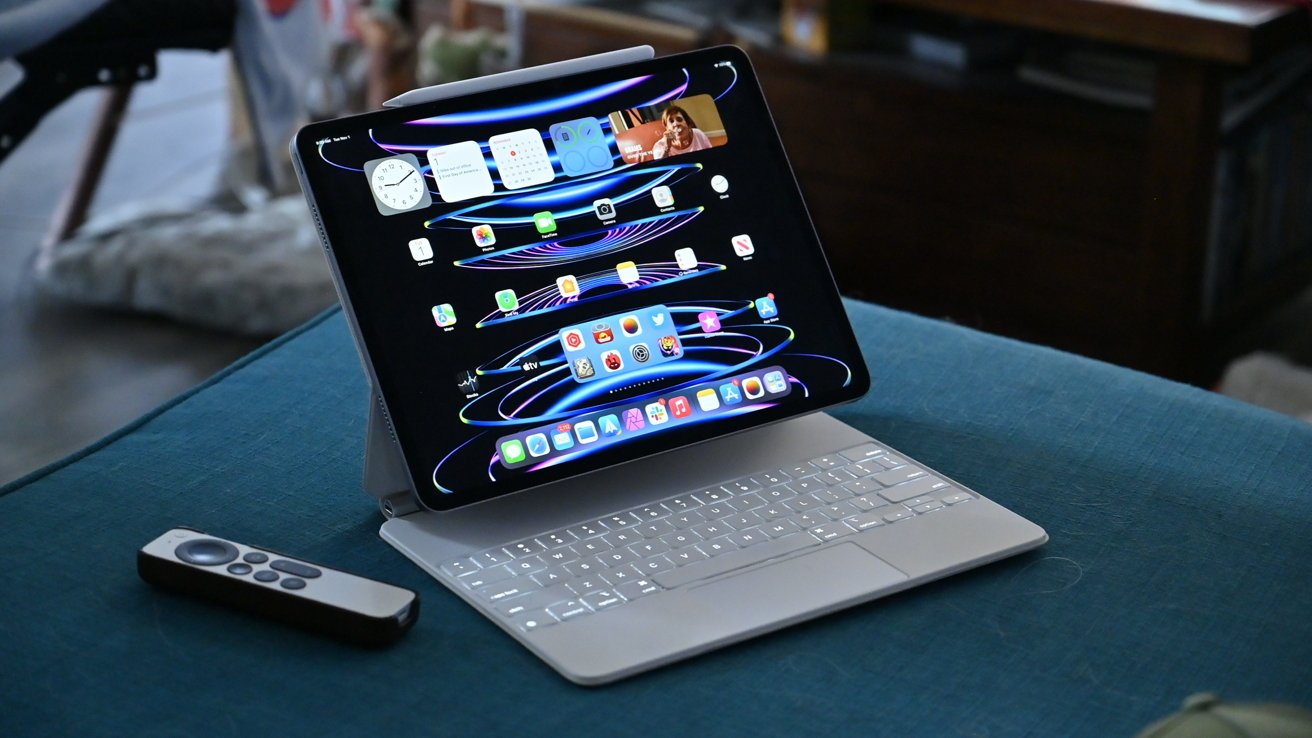
The 2022 12.9-inch iPad Pro on the Magic Keyboard
Apple's hardware updates generally fall into three categories.
Updates are either a revamp that materially updates the design. Possibly, significant features are added. Often, a new model year brings just a specifications bump.
In a big update, we get all three. Most of the time, we get two. In 2022, Apple's iPad pro got just the third.
The iPad Pro was in a very good place that the 2021 hit, keeping the 2018 design. Instead of rocking the boat and trying to improve a very solid design, Apple decided more speed is fine.
We're reviewing both sizes of Apple's 2022 iPad Pros. We've opted for the 12.9-inch iPad in space gray and silver for the smaller.
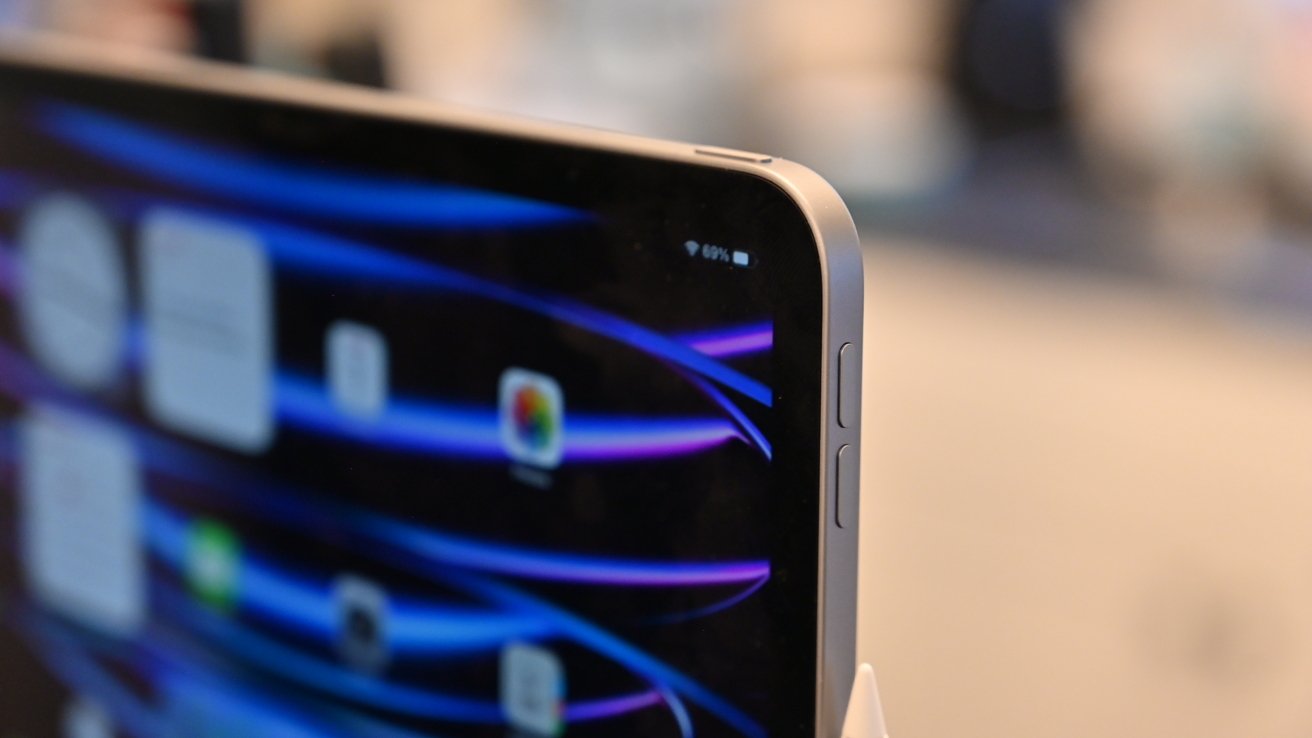
iPad Pro has a squared-off design
Both share the flat-edged design motif and an edge-to-edge display, with identical camera bumps. The dimensions and weight prove the carry-over of the previous design.
The 12.9-inch model is 11.04 inches long, 8.46 inches wide, and 0.25 inches thick, while the 11-inch model is 9.74 inches by 7.02 inches by 0.23 inches thick. These 2022 model measurements are the same as the 2021 versions.
Weight also remains the same, with the 11-inch models hitting 1.03 pounds. The 12.9-inch model weighs 1.5 pounds for the Wi-Fi model and 1.51 pounds for Wi-Fi + Cellular.
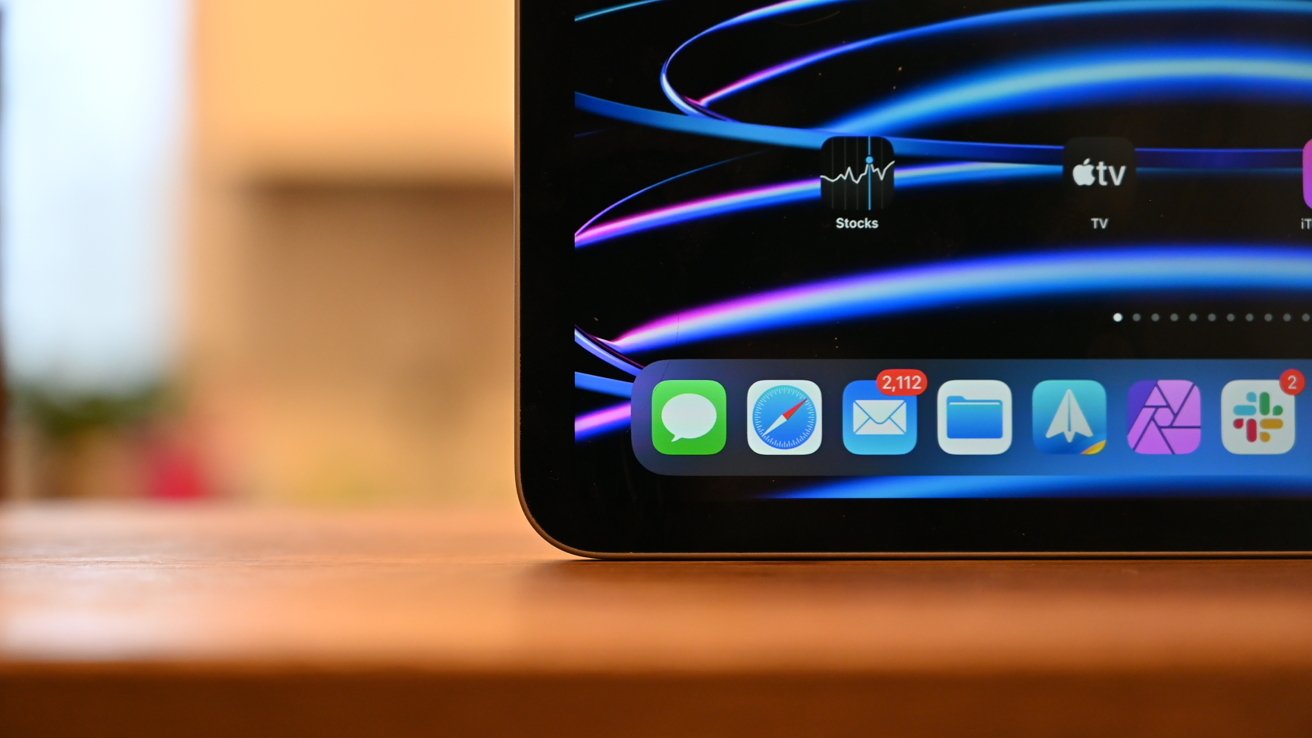
Closeup on the iPad Pro dock
Apple has used this design language for three iPad Pro generations in a row, growing only the camera bump.
Then again, this isn't a new thing for Apple. We have all seen in the MacBook Pro that the company will reuse a design for years if it's working well -- and that's what we've got here.
The 2022 model still has a large edge-to-edge display with a thin black bezel around the edge, the same since 2018.
We'd heard rumors Apple would be bringing a MagSafe-like charger to the iPad's design, but those didn't materialize. USB-C remains the only charging method.
Paired with it is a 10-core GPU, which Apple claims provides 35% faster graphics performance in the new iPad Pros. Then there's the Neural Engine, with the 16-core machine learning component capable of up to 15.8 trillion operations per second, or 40% more than the M1.
Then there's the Media Engine, dedicated hardware encoders and decoders for H.264, HEVC, ProRes, and ProRes RAW footage. This, combined with the speed increases, make the iPad Pro a great video tool once apps like DaVinci Resolve shift over to the tablet.
On Geekbench 5, we saw the single-core score jump from 1711 to 1904. Apple promised a 15 percent faster CPU -- and that's about what we've got.
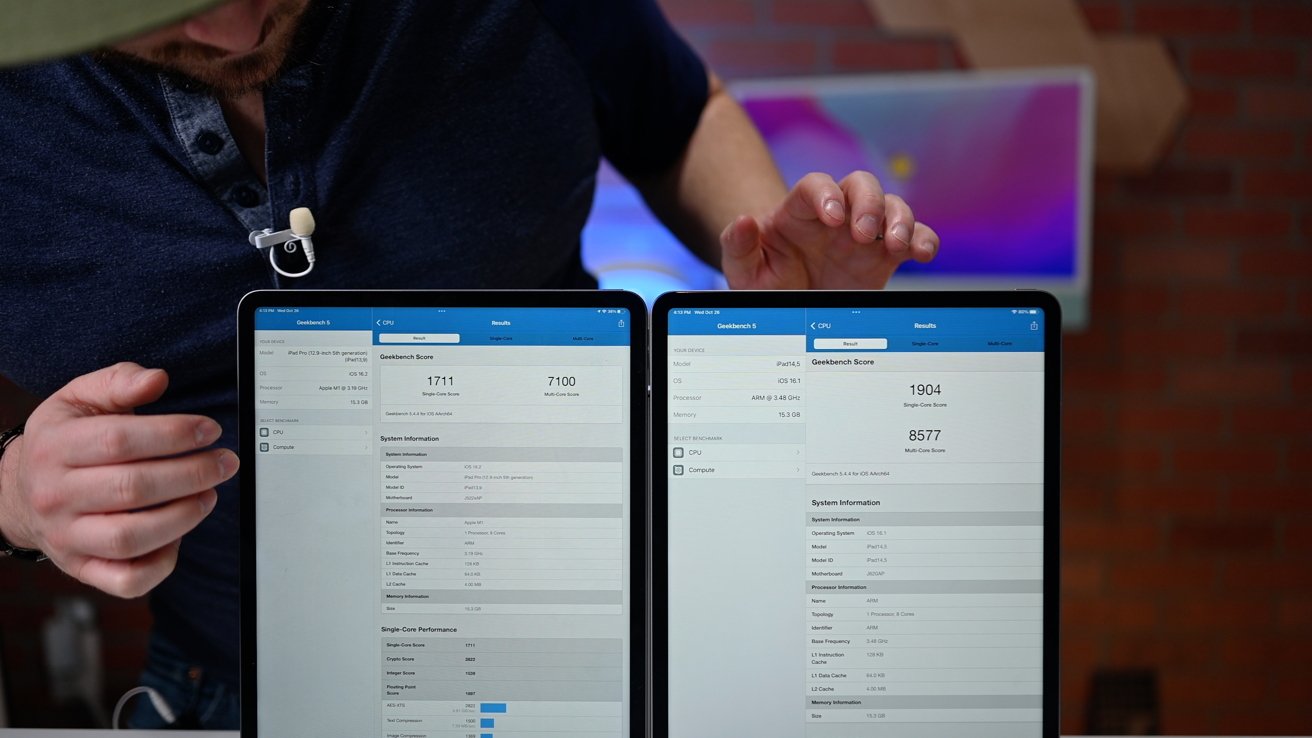
iPad Pro Geekbench results
On the multi-core, it rose more than 15 percent going from 7100 to 8577.
The Geekbench 5 Computer test for graphics saw a roughly 60 percent boost, increasing from 20928 to 33313. In Core ML testing, the Geekbench ML test went from 997 to 1233, displaying a notable improvement in machine learning performance.
You've also got the unified memory bandwidth increased by 50% to 100GB/s. The memory itself is 8GB for the 128GB to 512GB of storage models and 16GB for the 1TB and 2TB, matching the 2021 releases.
The extra speed is welcome, as nearly any speed boost is. Given the state of iPadOS software, only those who use applications and games that can push the hardware enough will truly be able to appreciate it.
For everyone else, basic tasks will impress. Given the M1 was already quite zippy, the M2 won't necessarily seem like that much of an upgrade at first.
The iPad will then sense the position and angle of the pencil and -- maybe -- do something relevant. It works where supported across the UI with app icons swelling as the Apple Pencil crosses over the top of them.
We say maybe, because this will require more developer buy-in to become ubiquitous.

Hover effect with Apple Pencil
Apple's done an exceptional job with this reactive UI and has thought through many different use cases. With their own apps, that is.
For example, Apple introduced Scribble for Apple Pencil in iOS 15. With the new hover effect, bring the Apple Pencil toward a text field, and it will morph into a clear writing surface. It's so smooth.
This can also be extremely helpful to digital artists. In theory, you can see where the Apple Pencil will start drawing before the tip ever touches the surface.
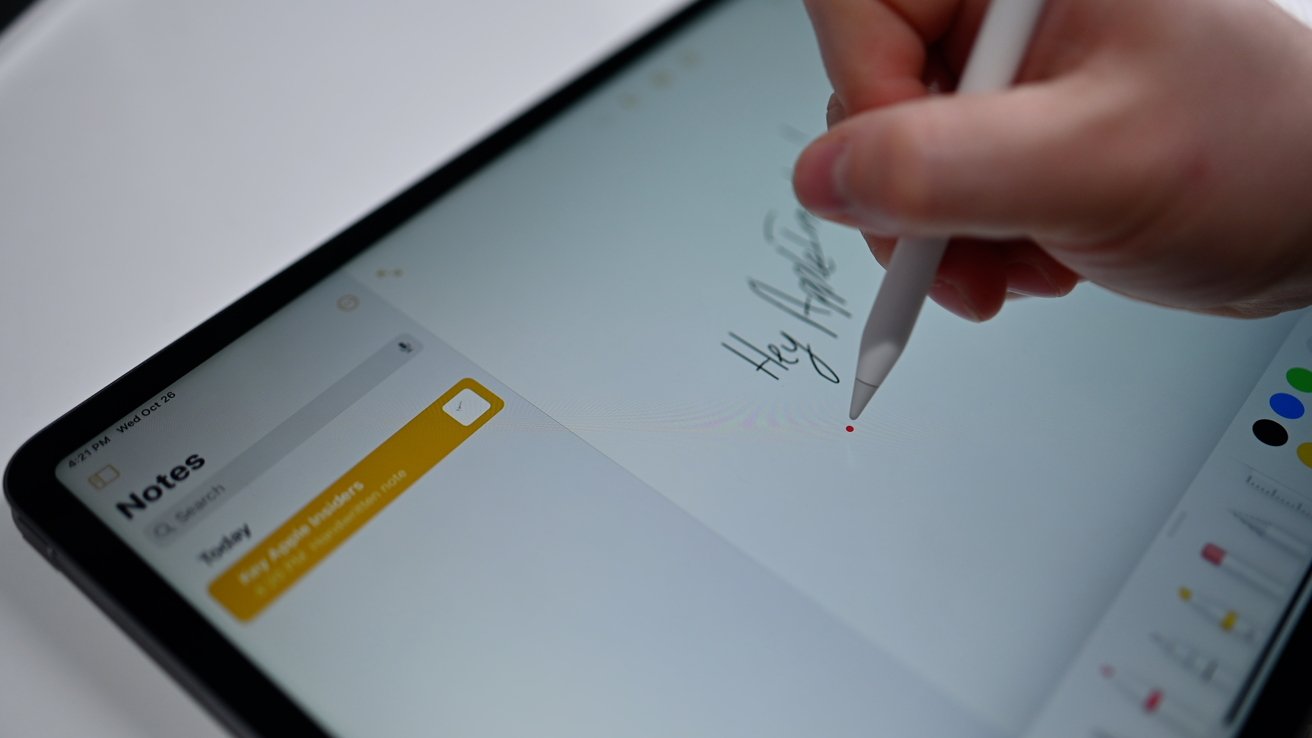
Drawing preview with Apple Pencil
There's still work to be done, even inside Apple's apps. Sometimes the preview dot didn't appear, while other times, it did. We couldn't determine a commonality between incidences, and it sometimes just took a second try to get it to work.
We're excited about what devs will do with this new hover feature as Apple has opened up the API. Some apps have already added support, such as Pixelmator Photo. Hopefully, other apps aren't far behind.
Apple could've brought screen technology parity across the two display sizes, but it chose against that. This was probably done to keep differentiation between the 12.9-inch model and the 11.9. It's a disappointment, but not a massive one.
The screens also benefit from Apple's now mostly standard display features, including ProMotion adaptive refresh rates, a fully-laminated display, Wide Color (P3) support, True Tone, and the fingerprint-resistant oleophobic coating.
These f/1.8 and f/2.4 cameras have a 2x optical zoom out and a 5x digital zoom in, True Tone flash Autofocus with Focus Pixels on the Wide, and Apple's usual software features. That means you get the Smart HDR 4, red-eye reduction, auto image stabilization, and so on.
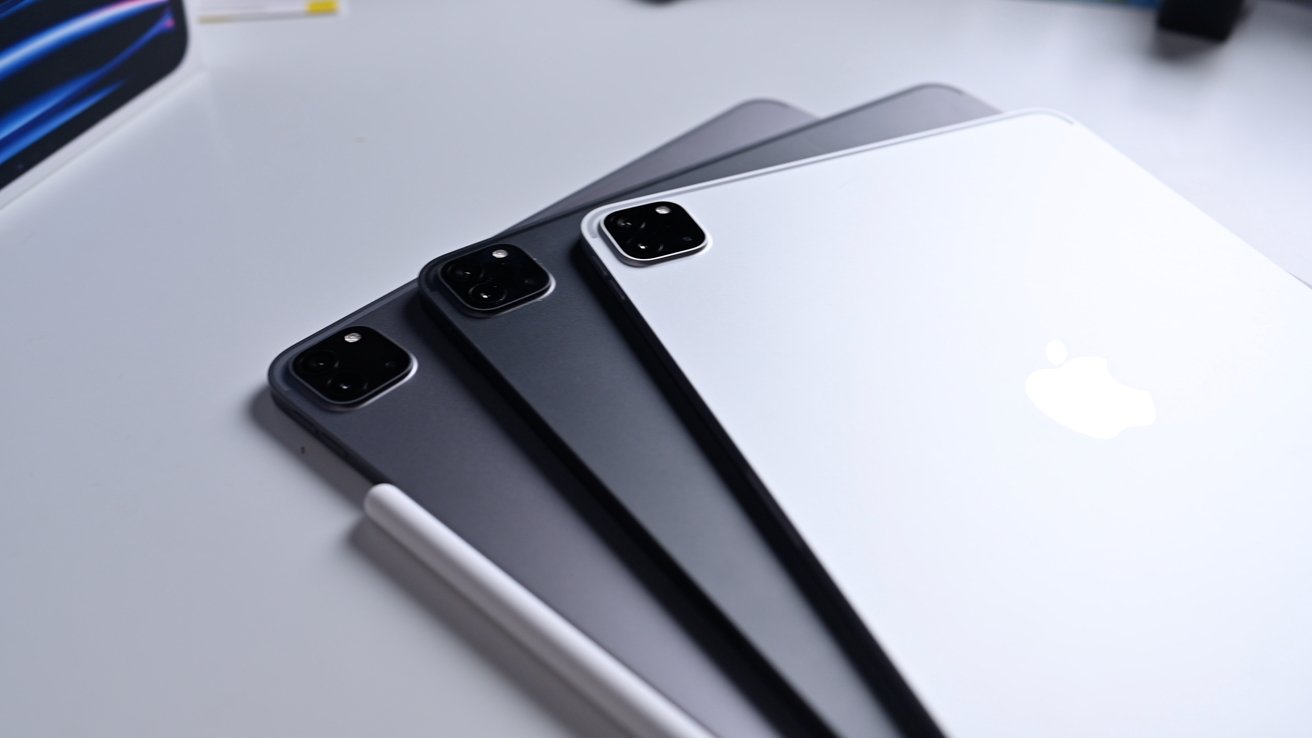
2021 iPad Pro (bottom) with both 2022 models
The LiDAR scanner returns once more, providing a depth map of the area for AR apps, as well as assisting with getting focus in low-light situations.
Around the front, the 12MP Ultra Wide TrueDepth camera array is back, with a 122-degree field of view, an f/2.4 aperture, and features like Portrait mode with Portrait Lighting, Animoji and Memoji, and handling Face ID.
The only real difference this time around is with video. The 4K 60fps video capabilities at the rear now include ProRes recording at 4K 30fps, except it's at 1080p for the 128GB capacity model.
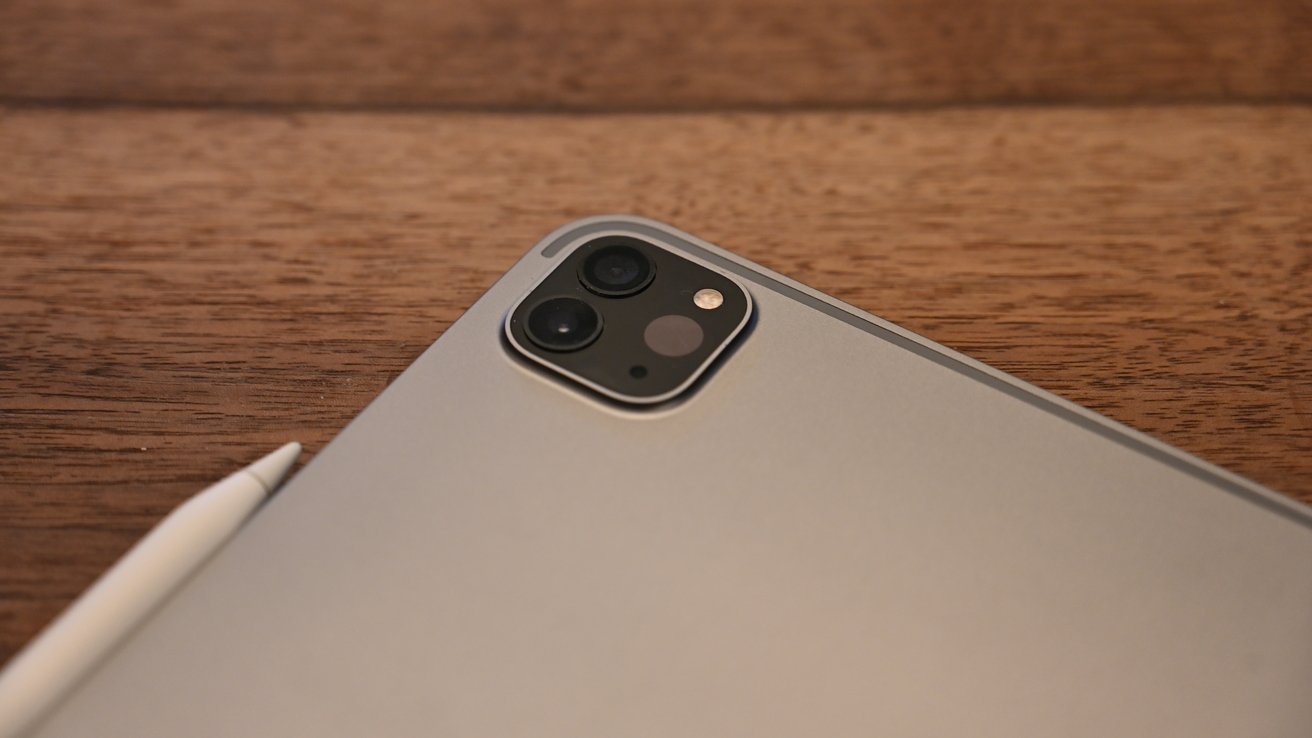
12.9-inch iPad Pro camera module
Oddly, Apple doesn't support ProRes natively in the stock Camera app but instead forces you to use third-party apps.
The rest of the video list reads the same as usual, including 240fps slo-mo at the rear, time-lapse support, audio zoom, stereo recording, and 1080p 60fps video at the front.
Likewise, Bluetooth has finally moved on from Bluetooth 5.0 in favor of Bluetooth 5.3. Again, if you have hardware that supports Bluetooth 5.3, it'll benefit from a more resilient connection.

Better connectivity features
These are good -- if relatively minor -- improvements for the iPad Pro, but they read more like future-proofing efforts than features in their own right.
If you opt for a Wi-Fi + Cellular model, you'll find the connection hasn't changed much. It still supports sub-6GHz and mmWave so it will work with the still-rolling-out infrastructure.
Gigabit LTE is still there as a backup, albeit supporting 30 bands instead of 32. The reduction in bands has no impact on users in the US market.
Thankfully, Apple isn't pushing the iPhone 14's lack of a physical SIM onto the iPad Pro, as there's still nano-SIM support and eSIM.
At the base, the Thunderbolt-USB 4 port enables you to recharge the iPad Pro, connect it to devices and accessories, and an external display if you wish. The Smart Connector, used for accessories like the Magic Keyboard, also returns for 2022.
The collection of five "studio-quality" microphones dotted around the iPad Pro's enclosure is paired with the speakers.
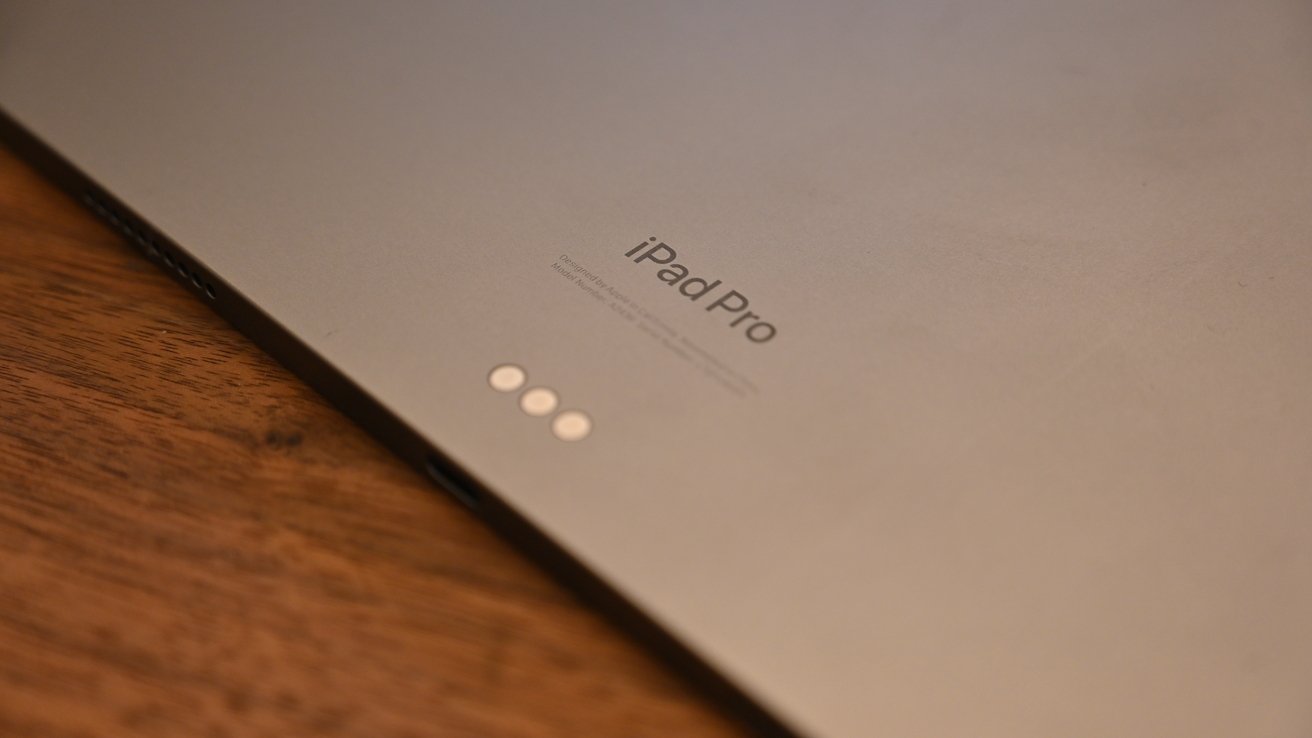
New iPad Pro logo on the back
Then there's battery life, which involves a 28.65 watt-hour lithium polymer battery in the 11-inch model, and 40.88Wh for the 12.9-inch. This results in the usual Apple claims of up to 10 hours of usage for web surfing and watching video while on Wi-Fi or up to 9 hours when web surfing on cellular networks.
It's not quite reaching the sky-high levels of the iPhone range regarding usage time. But at least it's comforting to know it'll manage a full day of work without issue.
The list of unchanged items also extends to pricing. Apple hasn't changed them for this refresh in the US.
The 11-inch, in Space Gray or Silver, will cost you $799 for the 128GB model, $899 for 256GB, $1,099 for 512GB, $1,499 for 1TB, and $1,899 for 2TB. The 12.9-inch model is $300 more expensive across the board, starting from $1,099 and rising to $2,199.
Cellular, again, is a $200 premium regardless of configuration, making the most expensive model $2,399.
We've said this in the past, but it feels more apt this year than ever. Right now, folks are still reeling from the smoldering dumpster fire that is Stage Manager.
Stage Manager was a mess during the beta phase, and Apple had to strip out functionality for the iPadOS 16.1 launch. Even the new iPad Pros don't have extended external display support until iPadOS 16.2 ships sometime later in 2022.
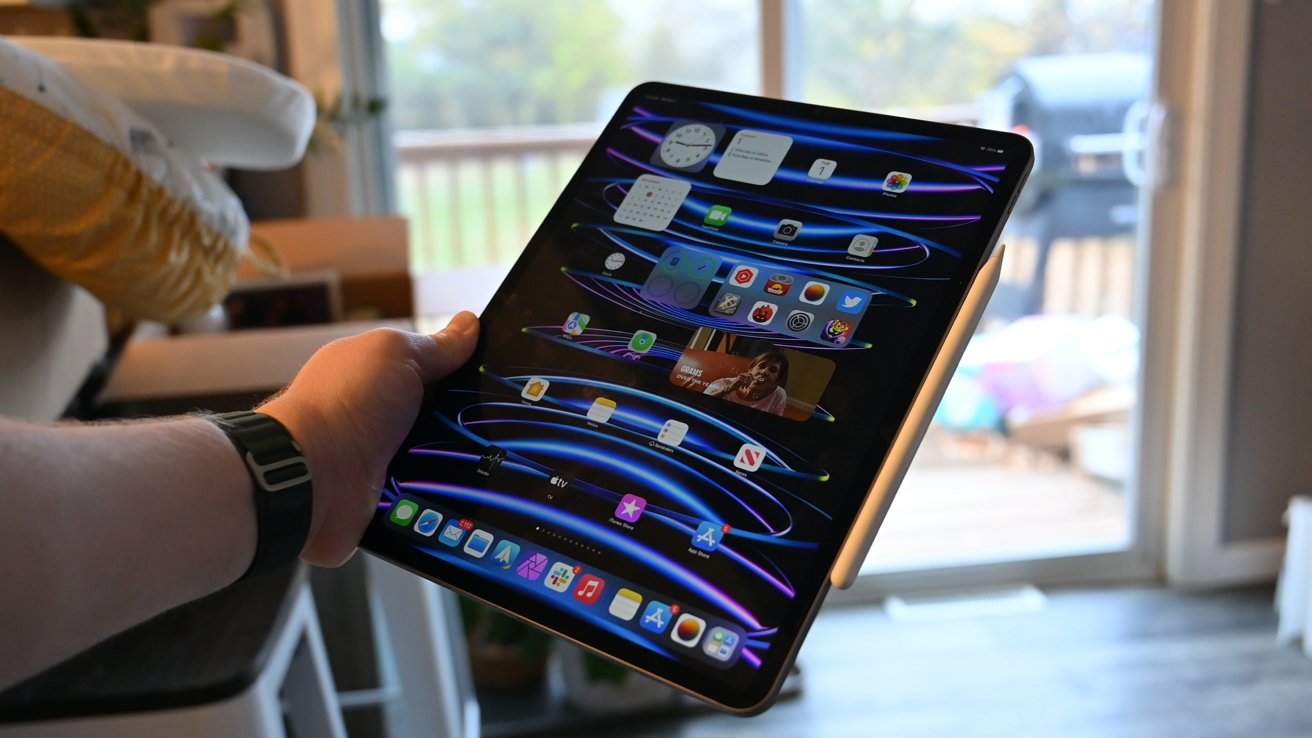
Using iPad Pro
But Stage Manager still has many other issues with window resizing, odd aspect ratios, and incorrect app rotation.
Apple also made a big deal about the M2's video encoding and graphics capabilities, yet its pro-level software still hasn't come to the iPad. Final Cut Pro would be a natural fit, as evidenced by other video editors on the platform.
We're barely getting to tiptoe into the water of high-level software with some basic development tools like the ability to create apps with Swift Playgrounds.
Overall, it's frustrating that Apple has packed the iPad Pro with so much power from the M2 and has yet to bother to port its higher-end software. No "what's a computer" ad will spackle over that.
If you're being more generous, it could be an economically-sound design decision.
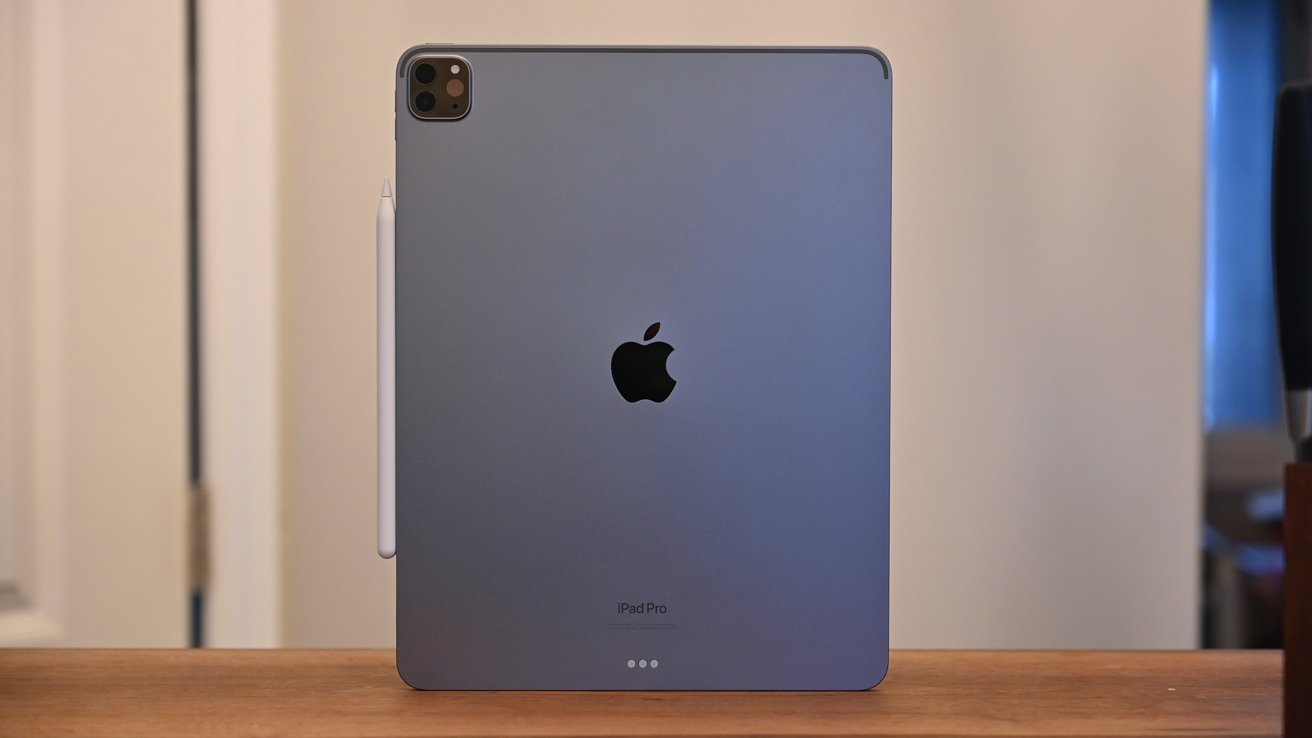
The 12.9-inch 2022 iPad Pro
The year-ago iPad Pro lineup was exceptionally well received. Except for the whole mini-LED thing for the 11-inch model, Apple has little reason to meddle with something that works so well.
The inclusion of M2 could make the iPad Pro an even better candidate for a desktop replacement, especially for videographers. Someday, the software will support pro workflows better, but today is not that day.
That's not a product of this year's model, though. It's an ecosystem issue.
Other than a few outliers that have an M1 iPad Pro, and crave more power, there's no reason for those users to upgrade. New customers looking at more computing heft in an iPad won't care and will buy it anyway.
Read on AppleInsider

The 2022 12.9-inch iPad Pro on the Magic Keyboard
Apple's hardware updates generally fall into three categories.
Updates are either a revamp that materially updates the design. Possibly, significant features are added. Often, a new model year brings just a specifications bump.
In a big update, we get all three. Most of the time, we get two. In 2022, Apple's iPad pro got just the third.
The iPad Pro was in a very good place that the 2021 hit, keeping the 2018 design. Instead of rocking the boat and trying to improve a very solid design, Apple decided more speed is fine.
We're reviewing both sizes of Apple's 2022 iPad Pros. We've opted for the 12.9-inch iPad in space gray and silver for the smaller.
Same good looks
Most people looking at the performance tablet will be very hard-pressed to tell any difference between the 2021 models and the class of 2022.
iPad Pro has a squared-off design
Both share the flat-edged design motif and an edge-to-edge display, with identical camera bumps. The dimensions and weight prove the carry-over of the previous design.
The 12.9-inch model is 11.04 inches long, 8.46 inches wide, and 0.25 inches thick, while the 11-inch model is 9.74 inches by 7.02 inches by 0.23 inches thick. These 2022 model measurements are the same as the 2021 versions.
Weight also remains the same, with the 11-inch models hitting 1.03 pounds. The 12.9-inch model weighs 1.5 pounds for the Wi-Fi model and 1.51 pounds for Wi-Fi + Cellular.

Closeup on the iPad Pro dock
Apple has used this design language for three iPad Pro generations in a row, growing only the camera bump.
Then again, this isn't a new thing for Apple. We have all seen in the MacBook Pro that the company will reuse a design for years if it's working well -- and that's what we've got here.
The 2022 model still has a large edge-to-edge display with a thin black bezel around the edge, the same since 2018.
We'd heard rumors Apple would be bringing a MagSafe-like charger to the iPad's design, but those didn't materialize. USB-C remains the only charging method.
From M1 to M2
Just like the version used in the M2 MacBook Air and M2 MacBook Pro, the M2 in the iPad Pro is an eight-core CPU with four performance cores and four efficiency cores. Apple says the new iPad Pro is 15% faster than the previous model.Paired with it is a 10-core GPU, which Apple claims provides 35% faster graphics performance in the new iPad Pros. Then there's the Neural Engine, with the 16-core machine learning component capable of up to 15.8 trillion operations per second, or 40% more than the M1.
Then there's the Media Engine, dedicated hardware encoders and decoders for H.264, HEVC, ProRes, and ProRes RAW footage. This, combined with the speed increases, make the iPad Pro a great video tool once apps like DaVinci Resolve shift over to the tablet.
On Geekbench 5, we saw the single-core score jump from 1711 to 1904. Apple promised a 15 percent faster CPU -- and that's about what we've got.

iPad Pro Geekbench results
On the multi-core, it rose more than 15 percent going from 7100 to 8577.
The Geekbench 5 Computer test for graphics saw a roughly 60 percent boost, increasing from 20928 to 33313. In Core ML testing, the Geekbench ML test went from 997 to 1233, displaying a notable improvement in machine learning performance.
You've also got the unified memory bandwidth increased by 50% to 100GB/s. The memory itself is 8GB for the 128GB to 512GB of storage models and 16GB for the 1TB and 2TB, matching the 2021 releases.
The extra speed is welcome, as nearly any speed boost is. Given the state of iPadOS software, only those who use applications and games that can push the hardware enough will truly be able to appreciate it.
For everyone else, basic tasks will impress. Given the M1 was already quite zippy, the M2 won't necessarily seem like that much of an upgrade at first.
Hovering Pencils
The other fundamental change to the iPad Pro lineup is that Apple has introduced its Apple Pencil Hover experience. The feature allows you to hold the tip of the Apple Pencil 12 mm above the surface, without touching the display.The iPad will then sense the position and angle of the pencil and -- maybe -- do something relevant. It works where supported across the UI with app icons swelling as the Apple Pencil crosses over the top of them.
We say maybe, because this will require more developer buy-in to become ubiquitous.

Hover effect with Apple Pencil
Apple's done an exceptional job with this reactive UI and has thought through many different use cases. With their own apps, that is.
For example, Apple introduced Scribble for Apple Pencil in iOS 15. With the new hover effect, bring the Apple Pencil toward a text field, and it will morph into a clear writing surface. It's so smooth.
This can also be extremely helpful to digital artists. In theory, you can see where the Apple Pencil will start drawing before the tip ever touches the surface.

Drawing preview with Apple Pencil
There's still work to be done, even inside Apple's apps. Sometimes the preview dot didn't appear, while other times, it did. We couldn't determine a commonality between incidences, and it sometimes just took a second try to get it to work.
We're excited about what devs will do with this new hover feature as Apple has opened up the API. Some apps have already added support, such as Pixelmator Photo. Hopefully, other apps aren't far behind.
A missed display opportunity
The 12.9-inch Liquid Retina XDR screen still has a 2,732 by 2,048 resolution, 2,596 local dimming zones, a peak brightness of 1,600 nits, and a 1,000,000:1 contrast ratio. Likewise, the 11-inch still uses an LED-backlit display with a 2,388 by 1,668 resolution and a still useable 600 nits of brightness.Apple could've brought screen technology parity across the two display sizes, but it chose against that. This was probably done to keep differentiation between the 12.9-inch model and the 11.9. It's a disappointment, but not a massive one.
The screens also benefit from Apple's now mostly standard display features, including ProMotion adaptive refresh rates, a fully-laminated display, Wide Color (P3) support, True Tone, and the fingerprint-resistant oleophobic coating.
Almost identical cameras
Again, Apple is sticking to a pair of cameras on the rear, reusing the 12MP Wide and 10MP Ultra Wide as one year ago.These f/1.8 and f/2.4 cameras have a 2x optical zoom out and a 5x digital zoom in, True Tone flash Autofocus with Focus Pixels on the Wide, and Apple's usual software features. That means you get the Smart HDR 4, red-eye reduction, auto image stabilization, and so on.

2021 iPad Pro (bottom) with both 2022 models
The LiDAR scanner returns once more, providing a depth map of the area for AR apps, as well as assisting with getting focus in low-light situations.
Around the front, the 12MP Ultra Wide TrueDepth camera array is back, with a 122-degree field of view, an f/2.4 aperture, and features like Portrait mode with Portrait Lighting, Animoji and Memoji, and handling Face ID.
The only real difference this time around is with video. The 4K 60fps video capabilities at the rear now include ProRes recording at 4K 30fps, except it's at 1080p for the 128GB capacity model.

12.9-inch iPad Pro camera module
Oddly, Apple doesn't support ProRes natively in the stock Camera app but instead forces you to use third-party apps.
The rest of the video list reads the same as usual, including 240fps slo-mo at the rear, time-lapse support, audio zoom, stereo recording, and 1080p 60fps video at the front.
A connectivity boost
For wireless connectivity, Apple has made a change to support Wi-Fi 6E. This should mean you'll get faster Wi-Fi connections, but only if the network infrastructure supports the standard.Likewise, Bluetooth has finally moved on from Bluetooth 5.0 in favor of Bluetooth 5.3. Again, if you have hardware that supports Bluetooth 5.3, it'll benefit from a more resilient connection.

Better connectivity features
These are good -- if relatively minor -- improvements for the iPad Pro, but they read more like future-proofing efforts than features in their own right.
If you opt for a Wi-Fi + Cellular model, you'll find the connection hasn't changed much. It still supports sub-6GHz and mmWave so it will work with the still-rolling-out infrastructure.
Gigabit LTE is still there as a backup, albeit supporting 30 bands instead of 32. The reduction in bands has no impact on users in the US market.
Thankfully, Apple isn't pushing the iPhone 14's lack of a physical SIM onto the iPad Pro, as there's still nano-SIM support and eSIM.
At the base, the Thunderbolt-USB 4 port enables you to recharge the iPad Pro, connect it to devices and accessories, and an external display if you wish. The Smart Connector, used for accessories like the Magic Keyboard, also returns for 2022.
More of the same
There's little to add to Apple's four-speaker system for audio, which is the same as the last generation -- but there's not much that could be changed here. It has the neat trick of providing stereo sound regardless of the tablet's orientation, and you can't get much better than that.The collection of five "studio-quality" microphones dotted around the iPad Pro's enclosure is paired with the speakers.

New iPad Pro logo on the back
Then there's battery life, which involves a 28.65 watt-hour lithium polymer battery in the 11-inch model, and 40.88Wh for the 12.9-inch. This results in the usual Apple claims of up to 10 hours of usage for web surfing and watching video while on Wi-Fi or up to 9 hours when web surfing on cellular networks.
It's not quite reaching the sky-high levels of the iPhone range regarding usage time. But at least it's comforting to know it'll manage a full day of work without issue.
The list of unchanged items also extends to pricing. Apple hasn't changed them for this refresh in the US.
The 11-inch, in Space Gray or Silver, will cost you $799 for the 128GB model, $899 for 256GB, $1,099 for 512GB, $1,499 for 1TB, and $1,899 for 2TB. The 12.9-inch model is $300 more expensive across the board, starting from $1,099 and rising to $2,199.
Cellular, again, is a $200 premium regardless of configuration, making the most expensive model $2,399.
Software is still lacking
Despite Apple's gains in performance, the new iPad Pros feel almost disingenuous. What's the point of all that power without software to back it up?We've said this in the past, but it feels more apt this year than ever. Right now, folks are still reeling from the smoldering dumpster fire that is Stage Manager.
Stage Manager was a mess during the beta phase, and Apple had to strip out functionality for the iPadOS 16.1 launch. Even the new iPad Pros don't have extended external display support until iPadOS 16.2 ships sometime later in 2022.

Using iPad Pro
But Stage Manager still has many other issues with window resizing, odd aspect ratios, and incorrect app rotation.
Apple also made a big deal about the M2's video encoding and graphics capabilities, yet its pro-level software still hasn't come to the iPad. Final Cut Pro would be a natural fit, as evidenced by other video editors on the platform.
We're barely getting to tiptoe into the water of high-level software with some basic development tools like the ability to create apps with Swift Playgrounds.
Overall, it's frustrating that Apple has packed the iPad Pro with so much power from the M2 and has yet to bother to port its higher-end software. No "what's a computer" ad will spackle over that.
Command-C, Command-V
There is considerable crossover between the outgoing M1 iPad Pro models and the new M2 versions. Indeed, with the relative lack of material changes in the tablet line, you could almost call it lazy.If you're being more generous, it could be an economically-sound design decision.

The 12.9-inch 2022 iPad Pro
The year-ago iPad Pro lineup was exceptionally well received. Except for the whole mini-LED thing for the 11-inch model, Apple has little reason to meddle with something that works so well.
The inclusion of M2 could make the iPad Pro an even better candidate for a desktop replacement, especially for videographers. Someday, the software will support pro workflows better, but today is not that day.
That's not a product of this year's model, though. It's an ecosystem issue.
Other than a few outliers that have an M1 iPad Pro, and crave more power, there's no reason for those users to upgrade. New customers looking at more computing heft in an iPad won't care and will buy it anyway.
2022 iPad Pro - Pros
- New M2 chip shows good year-over-year gains
- Design still looks good, even if unchanged
- 12.9-inch has an amazing display
- Hover for Apple Pencil is quite useful
- First Apple devices to support Wi-Fi 6e
2022 iPad Pro - Cons
- Few new features
- Hampered by lackluster software
- Still no mini-LED on 11-inch model
Rating: 4.5 out of 5
Where to buy Apple's iPad Pro
The new M2 iPad Pro can be purchased in 11-inch and 12.9-inch configurations from popular Apple resellers, with the latest offers available in our M2 11-inch Price Guide and M2 12.9-inch Price Guide. At press time, Apple Authorized Reseller Adorama is knocking $29.01 off AppleCare for either size model with this activation link and promo code APINSIDER.Read on AppleInsider


Comments
Buying public: Nah, we’re gonna buy it anyway. Don’t care what you blabber about.
If a person has an M1 iPad Pro, there is "no reason" to upgrade. This is basically true of every owner of an n-1 product. It was even true back in 2010 with iPhones when performance and capabilities were basically doubling year-on-year. Owners of 1 year products really shouldn't be upgrading. There are exceptions, but for the mass market, no.
If a person has an A12Z, A12X, A10X or older iPad Pros, there are lots of reasons to upgrade depending on what the person wants.
There is an R programming app in the App Store: https://apps.apple.com/us/app/r-programming-compiler/id1158038782
Every once in a while, I do some Python scripts on my iPad and Pythonista has been fine. There actually are some Linux/Unix CLI environment iPad/iPhone apps where the app is running a Linux environment, and you are using terminals with most CLI tools and common programming environments. C, C++, Lua, Perl, Python, etc.
With extended display support in Stage Manager, it becomes a real option for me to use as a laptop replacement. Apple still needs to let these apps arbitrarily install packages that don't come with their apps though. Oh, and Keynote, Microsoft Office, etc, need to be the full featured versions. MS loves to do not implement the one feature you need on environments and OSes that are not important to them. Apple needs to get on the ball too. Everyone. iPadOS apps should have every feature that the macOS, Windows app does.
Does that R app actually allow for compilation of packages and execution of code on the device? The documentation is super vague, but these limitations make me think that the actual processing might be done on a server somewhere:
What I would like is the equivalent of installing R from source on the command line on a Mac; also installing the toolchain for RStan. I don't want to just write code on an iPad and then have it run on a remote server, nor do I want to be restricted to pre-compiled packages. If I were to upgrade to an M2 iPad Pro, I would want to actually use the M2 for real processing.
It's similar to Pythonista, it comes with a like 5 of the most common packages (numpy, matplotlib, et al). You can run it for an unlimited time AFAIK. I run a 15 minute script one time.
At some point in time, Apple will allow the terminal applications to download arbitrary packages. At that point, it will basically be Linux or DarwinOS in an app. With Stage Manager and rumored larger iPads coming, this will allow more and more iPads to be PC replacements and offer a bigger market for these types of apps. So, hopefully all these apps update. I've been meaning to try ish.app or a-shell.app.
My iPP10.5 is limiting for PC workflows. Screen is too small.
If a person has a lot of browser views open concurrently (heavy web browser), uses a lot of different apps and it’s their primary computer, has certain needs like low latency Pencil or programming language and whatnot, an iPad Pro should be considered.
If they did put one in the 11", I think they would have to up the price to $900. They just won't have enough margin at $800. The iPad Pro 12.9 is an incredible deal imo. $1200 for a 13" miniLED, M2 w/8GB RAM, 256 GB storage. An M2 MBA is $1200 for a 13.6" LCD, 8GB RAM, and 256 GB of storage. Some pluses and minus in the intangibles. That miniLED is a big feature for video watching users. Low latency Pencil is great. It's a great hardware deal, and they must have been sorely tempted to charge $1200 for the base 128 GB version.
Once Stage Manager has been refined, and more importantly, 3rd party apps are actually updated for Stage Manager and bring parity between Mac and iPad versions, an iPP12.9 is going to be a very nice computer for a certain class of users.